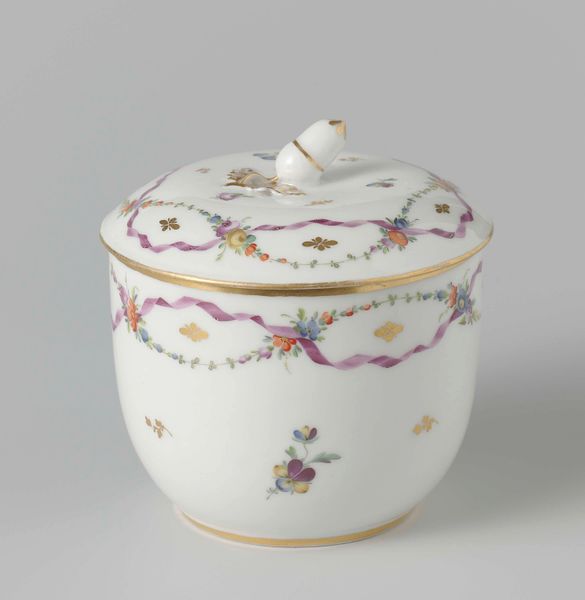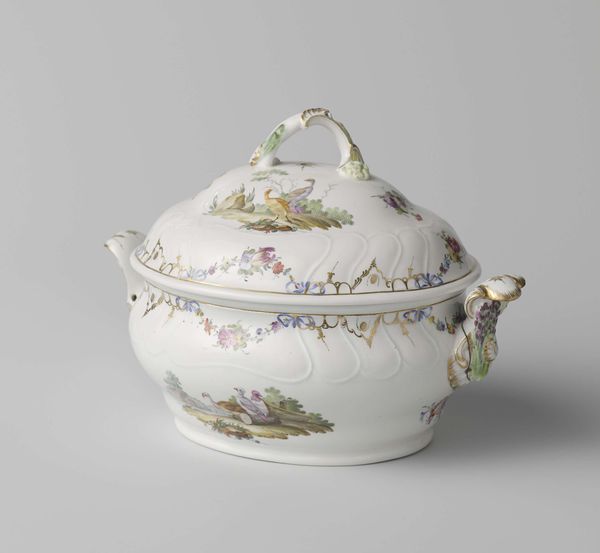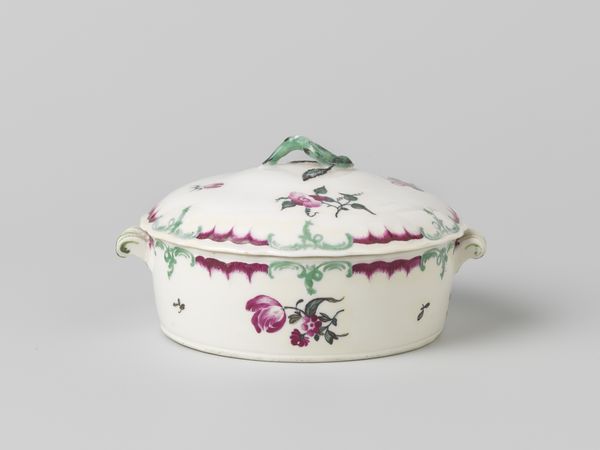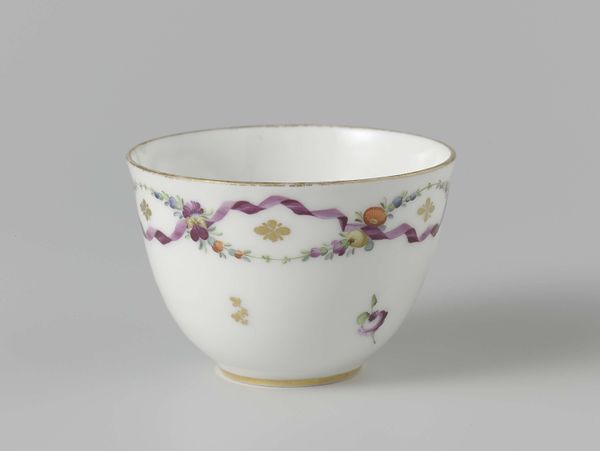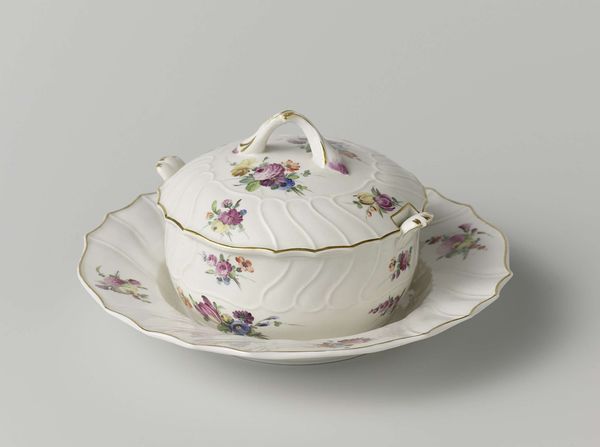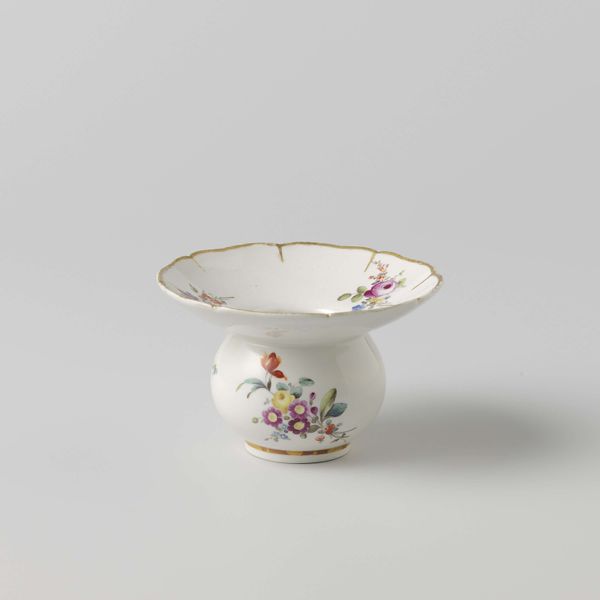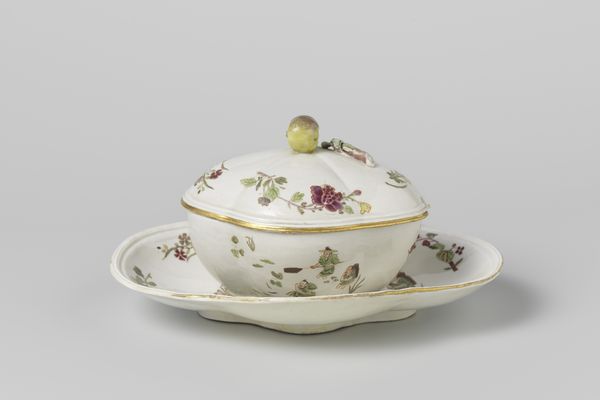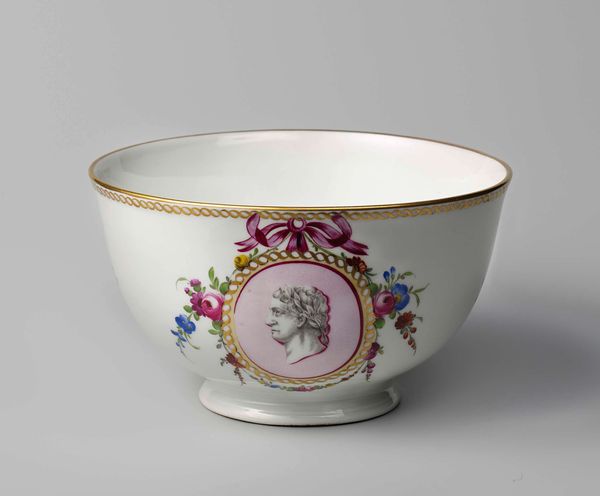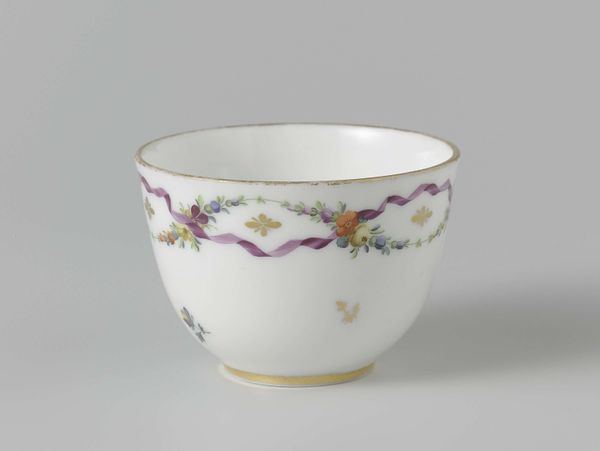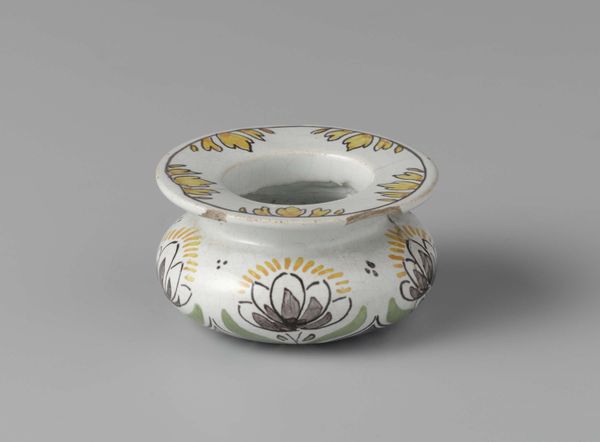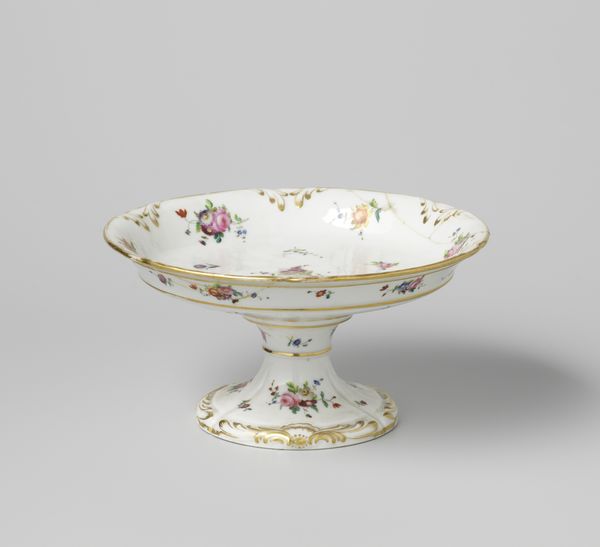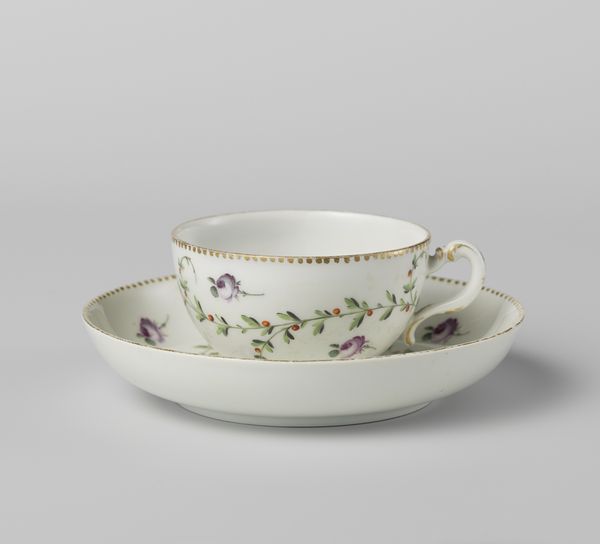
ceramic, porcelain
#
ceramic
#
porcelain
#
stoneware
#
ceramic
#
decorative-art
#
rococo
Dimensions: height 5.6 cm, width 10.6 cm
Copyright: Rijks Museum: Open Domain
Editor: Here we have a delicate pair of porcelain salt cellars, crafted around 1760-1768 by the Weesper porseleinfabriek. They feel quite decorative, almost too precious to hold something as mundane as salt! What's your take on these little vessels? Curator: Well, immediately, I see objects deeply embedded in the social rituals of dining during the Rococo period. Salt, though common now, was a valued commodity. These cellars weren't just functional; they were statements. What does the careful decoration of something so utilitarian suggest to you about the social values of the time? Editor: It suggests that even everyday activities were a stage for displays of wealth and taste? That these objects elevate something basic, giving it more importance. Curator: Precisely. Rococo, after all, was a style favored by the aristocracy and nouveau riche. How might objects like these play a role in reinforcing or even challenging social hierarchies within a dinner setting? Editor: I guess owning these would have visibly put you in a higher social position and signaled that to anyone dining with you, or even exclude those without the means. Curator: Exactly. The seemingly innocent beauty becomes a tool for social distinction, doesn't it? Also consider the porcelain itself – a luxury material at the time. Editor: It's fascinating to see how something as small as a salt cellar could embody so much about society and power. Thanks! Curator: My pleasure. It is these often-overlooked objects that whisper volumes about the past!
Comments
rijksmuseum about 2 years ago
⋮
Weesper porseleinfabriek model attributed to Christian Gottlob Berger (1730–after 1776), c. 1760–1761 Weesp, c. 1764–1768 hard-paste porcelain
Join the conversation
Join millions of artists and users on Artera today and experience the ultimate creative platform.
